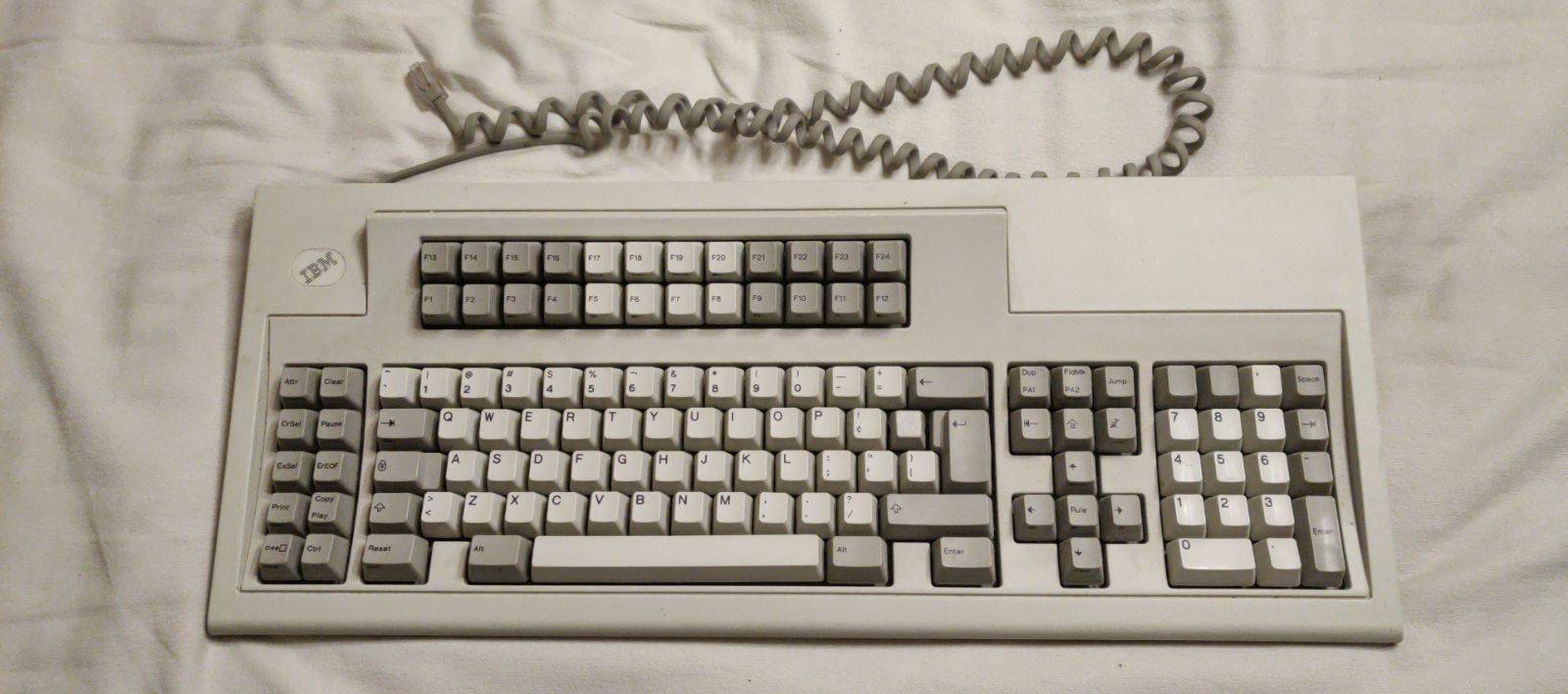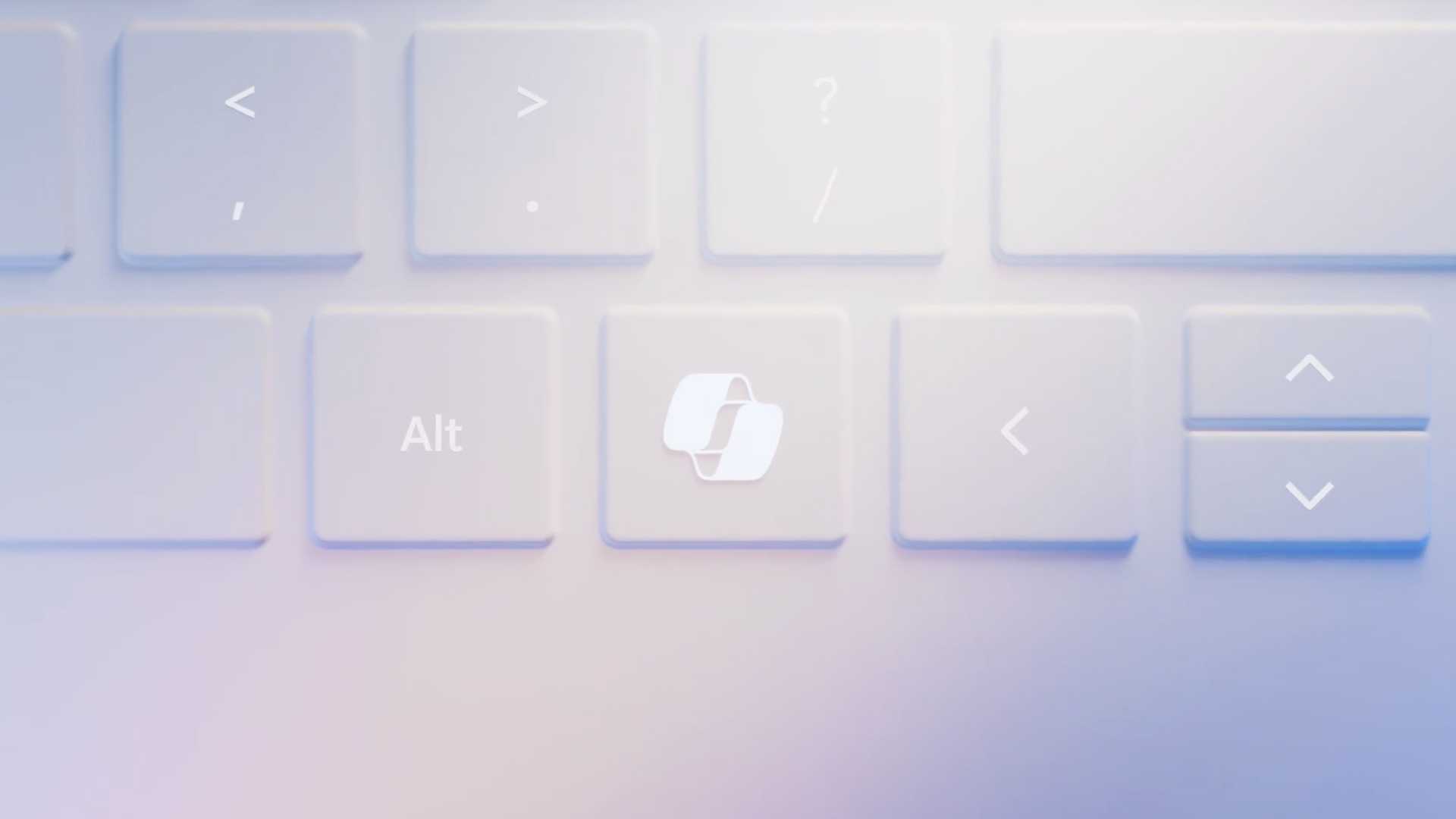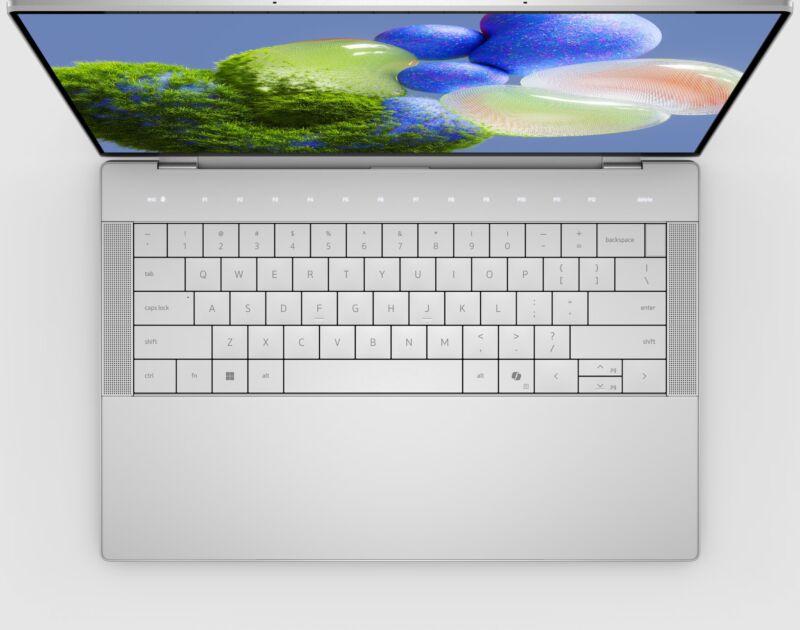In January, Microsoft introduced a new key to Windows PC keyboards for the first time in 30 years. The Copilot key, dedicated to launching Microsoft's eponymous generative AI assistant, is already on some Windows laptops released this year. On Monday, Tom’s Hardware dug into the new addition and determined exactly what pressing the button does, which is actually pretty simple. Pushing a computer's integrated Copilot button is like pressing left-Shift + Windows key + F23 simultaneously.
Tom's Hardware confirmed this after wondering if the Copilot key introduced a new scan code to Windows or if it worked differently. Using the scripting program AuthoHotkey with a new laptop with a Copilot button, Tom's Hardware discovered the keystrokes registered when a user presses the Copilot key. The publication confirmed with Dell that “this key assignment is standard for the Copilot key and done at Microsoft's direction.”
F23
Surprising to see in that string of keys is F23. Having a computer keyboard with a function row or rows that take you from F1 all the way to F23 is quite rare today. When I try to imagine a keyboard that comes with an F23 button, vintage keyboards come to mind, more specifically buckling spring keyboards from IBM.
IBM’s Model F, which debuted in 1981 and used buckling spring switches over a capacitive PCB, and the Model M, which launched in 1985 and used buckling spring switches over a membrane sheet, both offered layouts with 122 keys. These layouts included not one, but two rows of function keys that would leave today’s 60 percent keyboard fans sweating over the wasted space.
But having 122 keys was helpful for keyboards tied to IBM business terminals. The keyboard layout even included a bank of keys to the left of the primary alpha block of keys for even more forms of input.

The 122-key keyboard layout with F23 lives on. Beyond people who still swear by old Model F and M keyboards, Model F Labs and Unicomp both currently sell modern buckling spring keyboards with built-in F23 buttons. Another reason a modern Windows PC user might have access to an F23 key is if they use a macro pad.
But even with those uses in mind, the F23 key remains rare. That helps explain why Microsoft would use the key for launching Copilot; users are unlikely to have F23 programmed for other functions. This was also likely less work than making a key with an entirely new scan code.
The Copilot button is reprogrammable
When I previewed Dell's 2024 XPS laptops, a Dell representative told me that the integrated Copilot key wasn't reprogrammable. However, in addition to providing some interesting information about the newest PC key since the Windows button, Tom's Hardware's revelation shows why the Copilot key is actually reprogrammable, even if OEMs don't give users a way to do so out of the box. (If you need help, check out the website's tutorial for reprogramming the Windows Copilot key.)
I suspect there's a strong interest in reprogramming that button. For one, generative AI, despite all its hype and potential, is still an emerging technology. Many don't need or want access to any chatbot—let alone Microsoft's—instantly or even at all. Those who don't use their system with a Microsoft account have no use for the button, since being logged in to a Microsoft account is required for the button to launch Copilot.

Additionally, there are other easy ways to launch Copilot on a computer that has the program downloaded, like double-clicking an icon or pressing Windows + C, that make a dedicated button unnecessary. (Ars Technica asked Microsoft why the Copilot key doesn't just register Windows + C, but the company declined to comment. Windows + C has launched other apps in the past, including Cortana, so it's possible that Microsoft wanted to avoid the Copilot key performing a different function when pressed on computers that use Windows images without Copilot.)
In general, shoehorning the Copilot key into Windows laptops seems premature. Copilot is young and still a preview; just a few months ago, it was called Bing Chat. Further, the future of generative AI, including its popularity and top uses, is still forming and could evolve substantially during the lifetime of a Windows laptop. Microsoft's generative AI efforts could also flounder over the years. Imagine if Microsoft went all-in on Bing back in the day and made all Windows keyboards have a Bing button, for example. Just because Microsoft wants something to become mainstream doesn't mean that it will.
This all has made the Copilot button seem more like a way to force the adoption of Microsoft's chatbot than a way to improve Windows keyboards. Microsoft has also made the Copilot button a requirement for its AI PC certification (which also requires an integrated neural processing unit and having Copilot pre-installed). Microsoft plans to make Copilot keys a requirement for Windows 11 OEM PCs eventually, it told Ars Technica in January.
At least for now, the basic way that the Copilot button works means you can turn the key into something more useful. Now, the tricky part would be finding a replacement keycap to eradicate Copilot's influence from your keyboard.
Listing image by Microsoft



3175x175(CURRENT).thumb.jpg.b05acc060982b36f5891ba728e6d953c.jpg)
Recommended Comments
There are no comments to display.
Join the conversation
You can post now and register later. If you have an account, sign in now to post with your account.
Note: Your post will require moderator approval before it will be visible.